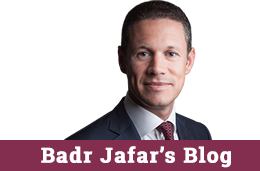New Energy Policies in the Middle East must go hand in hand with Subsidy Reform
There are three major consequences of the Middle East’s high energy intensity and reliance on oil: first, it carries a large implicit economic cost as a result of the value of oil and gas exports foregone and additional gas imports required in some cases; second, such a high degree of energy dependence increases the economy’s volatility through its greater exposure to energy supply disruptions or price shifts; and third, it has increased the region’s greenhouse gas emissions.
Given the intentions of the region to boost economic growth, reduce economic dependence on volatile energy markets and curtail greenhouse gas emissions growth, the region’s high energy intensity is a natural target for reform.
Fortunately, the very fact that the region’s energy use is anomalously high and possibly inefficient is a sign that relatively easy gains are possible to bring it under control. There are clear signs that there is significant scope for efficiency improvements. Energy use per unit of GDP is even more dramatically out of step with other regions than per capita statistics, with energy use per unit GDP double the G7 average for example, suggesting that with the right reforms energy demand growth can be slowed or even cut without harming economic growth. Indeed cutting energy demand by increasing energy efficiency would actually boost economic output as for the region’s oil producers more crude would be available for export, while for the region’s net gas consumers less gas would be need to be imported, improving the balance of trade in both cases.
So the theoretical potential for improvements is clear, but what are the practical steps to achieve it? Governments are currently focussed on developing alternative energy options as their primary solution, nuclear and solar power especially. These energy sources will deliver two of the key energy policy aims of the regions’ authorities: reducing their economic dependence on oil and cutting greenhouse gas emissions growth. However, to focus solely on these fuels would not completely fix the Middle East’ energy problems.
First of all, the high cost and slow delivery of these new energy sources mean that they cannot deliver all of the energy supply changes needed in a timely manner. That is why policymakers must also put the promotion of natural gas front and centre alongside nuclear and solar. Natural gas is the clear choice to complement these alternative energy supplies because the region has reserves in abundance which can be developed quickly, while gas-fired power plants are fast to build, reliable, responsive to demand and emit the least greenhouse gases of any hydrocarbon, at least 50% less than coal and 30% less than oil in power generation.
Second, and more fundamentally, promoting nuclear and solar, or even natural gas, do not address the problem of energy consumption as I previously mentioned. Without addressing this, economic growth will still be affected by demand constantly surpassing supply since the addition of alternative energy sources does not change this demand side problem.
The underlying source of the region’s high energy intensity must be addressed and reformed if the region is to deliver a sustainable energy policy with maximum economic benefits: subsidies. Subsidies to oil, gas, water, electricity mean that consumers pay far less than the market rate for these products while producers cannot achieve full value for their output. The UAE, for example, has amongst the highest subsidy rates per person in the world, with energy subsidies worth nearly $4,200 per capita per annum in 2011 according to the IEA. While such costs may be internalised by the state and judged to provide worthwhile benefits, subsidies always distort market incentives and result in a less efficient energy and economic outcome.
Middle East energy use is so high because consumers have little incentive to reduce their energy consumption or make their energy use more efficient since the financial savings from doing so are negligible. Conversely, producers have less incentive to develop new supplies if they cannot sell for above the cost of production. Moreover, as the economy and energy market fundamentals shift, the lack of any market-based price signals means that supply and demand does not respond quickly enough to changing circumstance, slowing the economy down further.
A classic example of the effects of subsidies to constrain the region’s economic potential is the role of oil in Saudi Arabia’s power sector. In the summer months over a million barrels per day of oil is burnt in power plants to meet peak power demand because there is insufficient non-associated gas production to meet demand. Subsidies exacerbate the problem at every turn: subsidised power prices boost demand; subsidised oil prices make it feasible to burn for power even though it comes at a huge opportunity cost compared to the revenues it would have achieved if exported; at current prices Saudi Arabia there is an opportunity cost ofUSD85-95 on every barrel burnt in its power generation sector, and so with oil demand in the power sector in excess of 230 million barrels a year that is $20 billion of lost export revenues.Finally subsidised gas prices create the supply shortfall in the first place because they make it uneconomic to explore for and develop the non-associated gas resources that Saudi Arabia is believed to have in abundance – in recent years LUKoil, Eni, Repsol, Shell and Sinopec have all committed to look for natural gas in the country and subsequently exited without success – while leading to unconstrained industry demand growth. Moving towards a market based system would address all of these imbalances and make the Saudi or any other Middle East economy healthier and more robust.
The eventual removal of subsidies will create both winners and losers, so a transfer from the current system to a new one must be carefully designed to smooth any disruption and compensate the vulnerable but if a plan is prepared and carried out over a number of years this should not be an insurmountable problem. Ultimately, supply side reforms, to boost alternative energy sources can only ever be half a solution.Demand side reform, via a path to ending energy subsidies in the region, is equally essential to deliver the best economic future for the Middle East.
as featured on The World Post on 19th May 2013

 Tweets by @BadrJafar
Tweets by @BadrJafar


